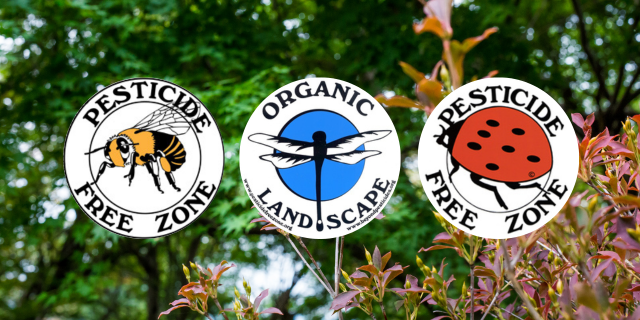23
Apr
EPA Inspector General Report Cites Agency Failures in Cleanup of Wood Preservatives at Superfund Site
(Beyond Pesticides, April 23, 2024) The Office of Inspector General for the U.S. Environmental Protection Agency (EPA) released a report last week finding that the agency has failed to establish âinstitutional controlsâ at the American Creosote Works Superfund Site in Pensacola, Florida, leading to continuous groundwater and soil contamination that âleav[es] the public at risk of exposure.â The 1980 Comprehensive Environmental Response, Compensation and Liability Act (CERCLA) established the Superfund program, codified under 42 U.S.C. Chapter 103, to clean up contaminated sites with tax money from polluting industries.
The OIG made eight recommendations for the regional EPA administrator and one for the assistant administrator âfor Land and Emergency Management to improve the institutional controls at American Creosote Works Superfund Site.â There are three main determinations found in the results section of the OIG report: first, the institutional controls to prevent potential exposure were either âinsufficient or unimplemented;â second, the EPA missed its mark in communicating associated risks to the public in areas surrounding this Superfund site; and third, the full administrative record for this site was not available at the time of inspection. This report builds on what advocates argue is the sustained legacy of EPA inaction and failure to protect public health and enforce environmental protections, particularly on the issue of wood preservatives laced with toxic chemicals.
Each determination breaks down as follows: First, the OIG defines institutional controls as âadministrative and legal tools that help minimize the potential for human exposure to contamination and protect the integrity of the engineered remedy by limiting land or resource use and guiding human behavior.â EPA failed to achieve the basic definition of institutional controls when it permitted the use of groundwater through the installation of new wells on some nearby private land parcels and âdid not conduct well surveys between 2002 and 2013.â When EPA did conduct surveys, âonly 61 percent of the properties listed inside the groundwater delineation areaâ were included despite the remaining residents living in areas of potential contamination. Regarding information sharing on potential exposure via soil contamination, âEPA relied on the community to distribute information and the remedial project managerâs verbal direction to private property owners to guide the ownersâ land-use choices,â which is problematic given the turnover of private land over the years can lead to construction that dredges up contaminated soil and leads to potential increased levels of exposure. Compounding the lack of information sharing and administrative hiccups, there was also missing required documents (per CERCLA regulations) between EPA and local/state stakeholders including a memorandum of understanding between EPA and Northwest Florida Water Management District regarding protocols around denying well drilling permits within the zone of potential contamination. Nor was there proof of the creation of an Institutional Control Implementation Assurance Plan for the Superfund site that is designed to establish the parameters and monitoring mechanisms for the institutional controls in question.
Second, EPA failed to adequately and consistently keep the public informed of the associated hazards the Superfund site posed for nearby community members. For example, âEPAâs GIS databse file for the ACW Superfund site does not accurately represent the extent of the site contaminationâ in terms of contamination spillover beyond the geographical boundaries of the site, which OIG predicts could âmislead interested parties, such as parcel owners, real estate agents, and contractors…to believe that there is no soil contaminationâ outside of the old site.
Third, the report cites EPAâs failure to maintain a complete copy of the siteâs administrative record near or at the site for public access per CERCLA regulations. Both in the office and on the website page, there was a lack of complete, relevant documentation. On the website, as of 2023, âThe webpage did contain an electronic repository of documents under the âReports and Documentsâ section. However, collectively these documents also do not compose a complete administrative record because they do not include all the Records of Decision or the assessments, investigations, or feasibility studies on which the EPA based its remedial decisions. The EPAâs ACW webpage also did not include an index, and the electronic repository does not include documents demonstrating public involvement in the remedial decisions.â
The report outlines that, out of the nine total recommendations, there are still three left unresolved due to disagreement with the EPA Region 4 lead as signaled in the previous paragraph. Recommendations 3, 4, and 6 unpack how to solve the listed problems above.
- Recommendation 3 recommends that âthe EPA work with property owners and appropriate local governments to establish restrictive covenants before remediation began to prevent the disturbance of soil on impacted properties.â
- Recommendation 4 recommends that â[EPA Region 4] establish formal agreements with state and local government stakeholders regarding institutional controls.â
- Recommendation 6 recommends that âthe region ensure the existence of a complete physical administrative record.â
The report goes on to assess the regulatory inconsistencies of EPAâs insistence on exclusively maintaining an electronic administrative record, âGiven that this site-specific language is used in the final rule [a CERCLA regulation from 2013 called âNational Contingency Planâ] to address a comment on how the EPA will determine community preferences, the regionâs approach to provide an electronic-only administrative record is inconsistent with the assurances provided during the rulemaking process.â (See page 22 of the OIG report for a status update on all 9 recommendations.)
âThis report is not an aberration, but it is an indication that the U.S. EPA continues to fall short of its commitment to inform the public in accordance with federal regulations,â says Max Sano, organic program associate at Beyond Pesticides.
Case in point back in 2021, EPA Administrator Michael Regan visited Houston, Texas to tour a petroleum facility owned by Union Pacific Railroad Company as thousands of surrounding community members sued the corporation for adverse health effects allegedly caused by creosote contamination. The city of Houston was sued in the aftermath of a 13-year-old boy living near the facility who died of leukemia after a five-year battle with the disease. Yet, Administrator Regan failed to see the connection between lived experiences of frontline communities impacted by creosote wood preservatives since the EPA moved forward with its decision to reauthorize creosote use for another 15 years. Beyond Pesticides engaged with grassroots advocates for the EPA to acknowledge this fundamental disconnect through a previous Action of the Week (You can still engage on this issue as well!)
Creosote-induced health problems have emerged in communities across the country, such as Springfield, Missouri where a retired Kerr-McGee Treatment Facility continues to threaten community members. Creosote-laced wood in railroad tracks has also been of considerable alarm for community members living alongside railroad tracks dotted across the nation, including concerns from residents in Great Barrington, Massachusetts.
Federal inaction on toxic chemicals in wood products has been a longstanding problem. Beyond Pesticides released a report on the lasting effects of toxic chemicals in traditional utility poles, âPoison Poles â A Report About Their Toxic Trail and Safer Alternatives.â The problem of public exposure to creosote and toxic chemicals in wood goes beyond Superfund sites. âUsing a pole distribution formula…there are well over 116 million mini-waste sites in backyards, school yards, along rivers and lakes, and up and down roadsides across the country. Out of the over 3,000 electric utilities in the U.S., over one-half of these toxic poles are put in place by the 100 largest utilities. That translates to more than one toxic pole per household.â In May, King 5 News in Seattle, WA, sampled soil near pentachlorophenol-treated utility poles and found that in every case pentachlorophenol had leached out of the wood.â Beyond Pesticides found the following as far back as the late 1990âs: Wood preservative treatment facilities have contributed greatly to the ranks of Superfund cleanup sites. On the National Priority List (NPL) of sites identified by EPA: (i) Arsenic has been found in at least 781 NPL sites; (ii) Penta had been found at least 314 NPL sites; (iii) Chromium has been found in at least 386 hazardous waste sites on the NPL; (iv) Copper has been found at least 210 NPL sites; and (v) Creosote has been found at least 38 of NPL sites. Based on data from the EPA’s Superfund Enterprise Management System, there are 63 current and proposed Superfund sites based on former facilities in âLumber and wood products/wood preserving/treatmentâ with creosote and pentachlorophenol that fall on the National Priorities list as of 2024. If you zoom out beyond those two contaminants, there are 76 current and proposed Superfund sites on former wood product facilities that fall on the National Priorities List. If you zoom out further, former wood product facilities make up over 139 across all different site types (NPL, Superfund Alternative Approach, or not NPL) .
In 2022, EPA announced the cancellation of pentachlorophenol, which is still used on utility poles and railroad ties, as well as other industrial uses. The agency announced that registrants (chemical manufacturers) were to voluntarily cancel their penta products by February 29, 2024. EPA is then providing another 3 years for registrants to utilize their left-over stocks of penta, placing a hard end date on February 29, 2027. Despite highly elevated risk factors, EPA did not act until the last manufacturer shut down their operations in Mexico under the Stockholm Convention on Persistent Organic Pollutants, (See also Environmental Racism Strikes South Carolina Communityâwith the siting of a pentachlorophenol wood preservative plant.) Regarding creosote, the European Union begun a review of its environmental health impacts in 2011. Fast forward to 2022, the majority of EU states voted in favor of restricting its further authorization. Then, beginning at the end of April 2023, creosote was banned for treatment on fenceposts. However, the pesticide continues to be authorized for railroad tracks and utility poles.
Consumers and children, who are particularly susceptible to deadly and chronic health problems compared to the general population, have the right to avoid exposure to toxic chemicals in and surrounding their homes. See Tools for Change to learn how to organize in your community toward policies that align with Beyond Pesticidesâ mission to eliminate toxic petrochemical substances and pesticides within the decade. See Gateway on Pesticide Hazards and Safe Pest Management to identify particular toxic pesticides and substances of concern linked with relevant reports, fact sheets, and studies.
All unattributed positions and opinions in this piece are those of Beyond Pesticides.
Source: Office of Inspector General U.S. Environmental Protection Agency












